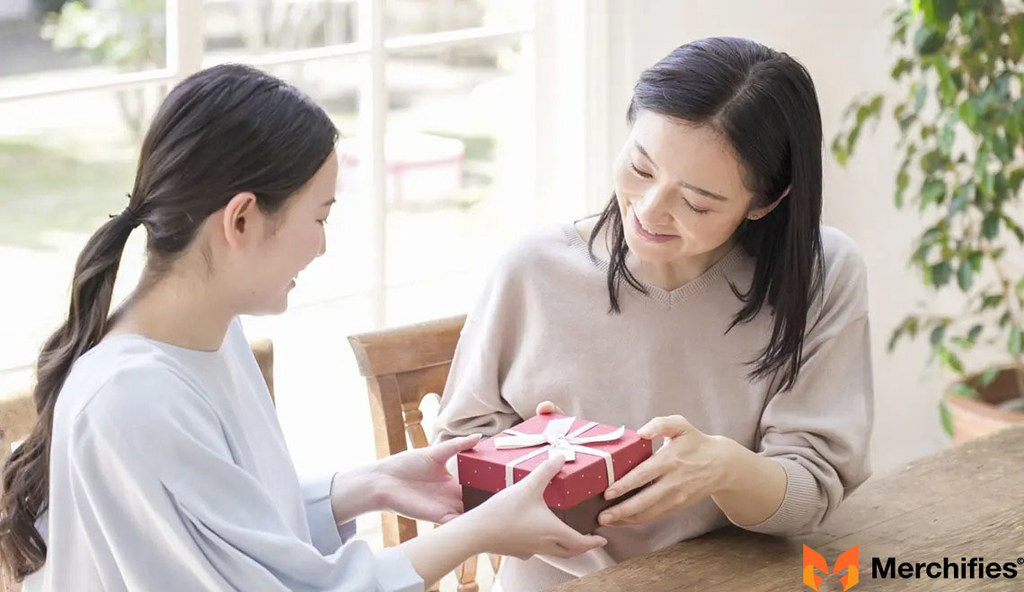20+ How to Tell Someone You Don’t Like Their Gift Politely: A Guide to Graceful Honesty
Learning How to Tell Someone You Don't Like Their Gift Politely represents one of modern social etiquette's most challenging scenarios.

Blog Post Contents
We've all been there. You unwrap a gift, and… well, it's not quite your style. Maybe it's a sweater that clashes with your entire wardrobe, or a gadget you'll never use. The awkwardness sets in.
After fifteen years as a relationship counselor and etiquette expert, I've witnessed countless gift-giving disasters that could have been handled with grace. The moment when someone's face falls after seeing your reaction to their carefully chosen present? That's a memory that sticks with both parties forever.
You want to be honest, but you also don't want to hurt the giver's feelings. It's a tightrope walk, and many of us stumble.
Learning How to Tell Someone You Don't Like Their Gift Politely represents one of modern social etiquette's most challenging scenarios. Today's diverse gift-giving culture—from Secret Santa exchanges to elaborate birthday celebrations—creates countless opportunities for mismatched presents and awkward reactions.
However, you can express your feelings without causing offense. By focusing on gratitude and tact, you can navigate this tricky situation with grace.
The psychology behind gift rejection reveals fascinating insights about human emotions and social bonding. When someone dislikes our gift, our brains interpret this as personal rejection, triggering the same neural pathways as physical pain. Understanding this biological response helps us approach gift disappointment with greater empathy and strategic communication.
This comprehensive guide will transform your approach to difficult gift situations, protecting relationships while maintaining your authenticity and emotional well-being.
The Social Psychology of Gift Disappointment
Gift-giving activates complex psychological mechanisms involving identity, expectation, and social bonding. When presents miss the mark, both giver and receiver experience distinct emotional responses that can either strengthen or damage relationships depending on how the situation unfolds.
Research from the Journal of Consumer Psychology shows that gift-givers often project their own preferences onto recipients, creating mismatches that nobody intends. Meanwhile, recipients face the dual challenge of managing their disappointment while protecting the giver's emotional investment in their gesture.
The key lies in understanding that How to Tell Someone You Don't Like Their Gift Politely involves managing two separate emotional experiences simultaneously. Your disappointment deserves acknowledgment, but the giver's positive intentions require protection and validation.
Modern American gift-giving culture adds additional complexity through social media expectations, diverse cultural backgrounds, and economic pressures. These factors create higher stakes for both giving and receiving presents gracefully.
The Foundation: Expressing Sincere Gratitude First
How to Tell Someone You Don't Like Their Gift Politely? First and foremost, express your gratitude. This is non-negotiable.
Gratitude serves as the essential foundation for any gift reaction because it acknowledges the giver's positive intentions regardless of the outcome. This principle applies universally across all relationship types, cultural backgrounds, and gift-giving occasions.
Acknowledge the thought and effort that went into the gift. "Thank you so much for thinking of me!" or "I really appreciate you getting me a gift."
During my counseling practice, I've observed that immediate gratitude expression prevents defensive reactions from gift-givers. When people feel appreciated for their effort, they become more receptive to honest feedback and less likely to interpret disappointment as personal criticism.
These simple phrases go a long way. The giver put time and energy into selecting something, and that deserves recognition.
The neurological impact of gratitude extends beyond mere politeness. Expressing appreciation triggers oxytocin release in both parties, creating positive emotional associations that buffer against potential negative reactions to gift disappointment.
The Science Behind Gratitude-First Responses
I've learned that starting with sincere thanks softens any potentially negative reactions.
Gratitude-first communication follows established conflict resolution principles used in therapeutic and diplomatic settings. By leading with appreciation, you create psychological safety that allows for more honest conversation about preferences and expectations.
This approach also models emotional intelligence for the giver, demonstrating how to separate intentions from outcomes. Many people learn better gift-giving skills by observing graceful reactions to their less successful presents.
Consider the long-term relationship implications of your initial reaction. The person who remembers your gracious response to their imperfect gift often becomes more thoughtful about future presents and more forgiving when you occasionally miss the mark yourself.
Strategic Honesty: Navigating Truth with Diplomatic Language
Now, for the tricky part: honesty. Choose your words carefully.

Honest communication about gift preferences requires strategic language choices that protect relationships while maintaining authenticity. The goal involves expressing your truth without attacking the giver's judgment, taste, or effort.
Focus on your personal preferences, not the gift's perceived flaws. Instead of saying, "I hate this color," try, "It's a very unique shade, and while it's not my usual style…"
This language technique, called "I-statement communication," places responsibility for preferences on yourself rather than suggesting problems with the gift itself. Professional mediators use similar approaches to discuss difficult topics without creating defensiveness.
This phrasing avoids direct criticism.
The difference between "This is ugly" and "It's not my usual style" lies in attribution and judgment. The first statement makes claims about objective reality, while the second acknowledges subjective preference differences that nobody can argue with or feel hurt by.
Real-World Application Examples
I once received a very loud patterned shirt, and I said, "I admire the bold pattern!"
This example demonstrates perfect diplomatic language that finds genuine positives without lying about personal preferences. Admiring boldness doesn't require loving the pattern or promising to wear the shirt regularly.
Similar approaches work across different gift categories. For books: "This author has such an interesting perspective." For home décor: "The craftsmanship really shows attention to detail." For clothing: "The fabric feels so luxurious."
Each response acknowledges positive aspects while avoiding commitment to personal enjoyment or regular use. This honesty protects your authenticity while preserving the giver's feelings and self-esteem.
Finding Authentic Positives: The Art of Genuine Compliments
Look for something positive to highlight. Maybe the gift is beautifully made, or the giver chose a color you admire, even if it's not on you.
Authentic positive finding requires genuine observation rather than fabricated enthusiasm. Most gifts contain some element worth appreciating—packaging, craftsmanship, uniqueness, or thoughtful details that reflect the giver's care and attention.
"The craftsmanship is really impressive," or "I love the color of the box it came in!"
These compliments work because they focus on objective qualities rather than personal preferences. Acknowledging skill, beauty, or thoughtfulness doesn't require claiming the gift perfectly matches your taste or lifestyle.
These compliments soften the impact of your unspoken disappointment.
The psychological principle of cognitive anchoring explains why positive comments early in conversations influence overall impressions. When you establish appreciation first, subsequent neutral or slightly negative reactions feel less harsh and more balanced.
Developing Your Observation Skills
This is a skill that takes practice, but it's essential.
Training yourself to notice positive details in unexpected places strengthens both your diplomatic communication abilities and your general gratitude practice. Many people discover that actively seeking positives in disappointing situations improves their overall life satisfaction.
Practice this skill during non-gift situations by finding something genuinely interesting or admirable in things you don't personally love. This mental exercise builds the neural pathways needed for graceful gift reactions during high-pressure social moments.
Professional customer service representatives excel at this technique because they regularly deal with complaints while maintaining positive relationships. Their approach involves acknowledging valid concerns while highlighting genuinely positive aspects of situations or products.
Conversation Redirection: Smooth Topic Transitions
Change the subject is a wise answer to the question How to Tell Someone You Don't Like Their Gift Politely.

Strategic conversation redirection prevents awkward dwelling on gift reactions while maintaining social flow and emotional comfort for both parties. This technique requires timing, sensitivity, and genuine interest in alternative topics.
After expressing gratitude and finding a positive, smoothly transition to another topic.
The transition timing matters significantly. Too quick, and you seem dismissive of their gift. Too slow, and awkwardness builds while you struggle to find more positive comments about something you dislike.
Ask the giver about their day, or share some news of your own. "So, how have you been lately?" or "I'm so excited about…"
Effective redirections focus attention on shared interests, mutual connections, or current events that engage both parties naturally. Avoid topics that might circle back to gifts, shopping, or personal preferences that could reignite awkward conversations.
Mastering Natural Transitions
This shifts the focus away from the gift.
Successful topic changes feel organic rather than obvious attempts to avoid discussion. The best redirections connect to something genuine about your relationship with the giver or current circumstances you both understand.
I always try to ask about something completely unrelated, like a recent movie or a shared hobby.
This approach works because it demonstrates ongoing interest in the person beyond the immediate gift exchange. It also provides opportunities for positive interaction that can restore comfortable social dynamics after potentially awkward moments.
Consider preparing several conversation topics in advance for gift-giving occasions. Having ready questions about work, family, hobbies, or current events prevents awkward silences and helps you redirect naturally when needed.
Relationship-Based Response Strategies
Your relationship with the giver matters. You might be more candid with a close friend than with a distant relative.

Different relationships require customized approaches to How to Tell Someone You Don't Like Their Gift Politely because intimacy levels, communication styles, and social expectations vary dramatically across your personal network.
Close friendships often allow for more direct honesty, while professional relationships, distant family members, and new acquaintances require greater diplomacy and emotional protection. Understanding these nuances prevents social missteps and relationship damage.
Intimate Relationships: Friends and Family
The context of the gift also plays a role. A birthday gift might require a different response than a holiday gift.
Close relationships provide more flexibility for honest communication because established trust and affection buffer against temporary disappointment or misunderstandings. However, even intimate relationships benefit from thoughtful communication about gift preferences.
With best friends, you might say, "I love that you thought of me, though this isn't quite my style. Want to come shopping with me to exchange it?" This level of directness works because strong friendships survive minor disappointments and often grow stronger through honest communication.
Family relationships require more nuanced approaches because they involve long-term dynamics, generational differences, and complex emotional histories. Grandparents who give outdated clothing deserve gentle appreciation, while siblings might appreciate more direct feedback about preferences.
Professional and Casual Relationships
Cultural differences might also change the social dynamic.
Workplace gift exchanges, neighbor presents, and casual friend situations require maximum diplomacy because these relationships lack the emotional resilience of intimate bonds. Mistakes in these contexts can create lasting awkwardness or professional complications.
For coworker gifts, focus entirely on gratitude and general appreciation: "Thank you so much for thinking of me during the holidays. This is so thoughtful of you." Avoid any hints of disappointment or preference differences that could affect professional relationships.
I've learned to adapt my responses based on the individual and the situation.
Cultural awareness becomes crucial in diverse American communities where gift-giving traditions, expectations, and interpretation of politeness vary significantly. What feels appropriately honest in one cultural context might seem rude or hurtful in another.
Advanced Diplomatic Techniques
The Exchange Discussion Approach
Suggesting alternatives is delicate. If appropriate, offer to exchange the gift or suggest a future activity together.
Gift exchanges require exceptional sensitivity because they directly address the mismatch between giver intentions and recipient preferences. This conversation works best with close relationships where honest communication strengthens rather than threatens the bond.
"Would you mind if I exchanged this for something else?" or "Maybe we could go see that movie you mentioned?"
The key lies in framing exchanges as collaborative improvements rather than rejections of the original choice. Position the conversation as an opportunity to find something you'll love even more, making the giver a partner in your happiness rather than someone who failed.
Frame it as a way to enhance the giver's thoughtfulness, not as a demand.
Successful exchange discussions emphasize gratitude for the gesture while exploring options that better match your preferences. This approach often leads to stronger relationships because it demonstrates trust, honesty, and collaborative problem-solving.
Important Cautions
Be very careful with this. It can easily be taken the wrong way.
Exchange suggestions carry significant risks because they can be interpreted as criticism, rejection, or ingratitude regardless of your intentions. Consider the giver's personality, your relationship history, and cultural expectations before attempting this approach.
Some people take exchange requests as personal failures, while others appreciate the opportunity to give something you'll truly enjoy. Learn to read these personality differences to avoid inadvertent hurt feelings or relationship damage.
Innovative Communication Strategies
Engaging Curiosity About the Gift
Instead of focusing on your dislike of the gift, engage the giver in conversation about it.
This redirection technique transforms potentially awkward gift reactions into genuine conversations about the giver's shopping experience, decision-making process, and personal taste. It shifts attention away from your reaction toward their story and perspective.
Ask them about where they found it, if they own it themselves, or how they suggest using it.
These questions serve multiple purposes: they show interest in the giver's experience, provide conversation topics that avoid your reaction, and sometimes reveal useful information about the gift that might change your perspective or usage ideas.
This shifts the focus away from your feelings and onto the gift itself, making the conversation more comfortable.
By becoming curious about their selection process, you demonstrate respect for their effort while avoiding the need to express enthusiasm you don't feel. This approach works particularly well with practical gifts or items you're unfamiliar with.
Specific Question Examples
For example, you could ask: "Do you have this CD too? What's your favorite track?" "I've never seen socks like these before! Where did you get them? Do you have a pair yourself?"
These questions work because they express genuine interest while requiring no commitment about your personal preferences. They also provide opportunities for the giver to share positive experiences or recommendations that might help you appreciate the gift more.
By putting the conversational burden on the gift-giver, you take the pressure off yourself and make the interaction more enjoyable for both of you.
This conversational strategy particularly helps introverts or people who struggle with social situations because it creates natural dialogue flow without requiring you to generate enthusiasm or detailed reactions to something you don't love.
Strategic Truth-Telling Approaches
When White Lies Serve Kindness
Sometimes, a little white lie is the kindest option to express the answer How to Tell Someone You Don't Like Their Gift Politely, especially if you're dealing with a sensitive gift-giver or the relationship isn't close enough for complete honesty.
Ethical considerations around white lies in gift situations involve balancing honesty with kindness, relationship preservation with personal authenticity. Sometimes protecting someone's feelings serves the greater good of maintaining positive social connections.
Find something positive to say about the gift, even if it's just a small detail.
The distinction between white lies and authentic positives matters for your personal integrity and long-term relationship health. Focus on genuinely true statements rather than fabricated enthusiasm that feels false to you and might seem insincere to others.
Crafting Authentic Positive Responses
Example: "Thank you so much! The color of this scarf is beautiful. I'll definitely find a way to incorporate it into my wardrobe."
This example works because it acknowledges genuine beauty without promising regular use or claiming the item perfectly matches your style. The commitment to "find a way to incorporate" shows appreciation without overenthusiasm.
Just remember to avoid exaggerating your enthusiasm. Instead of saying it's the "best present ever" or "I'll use it every day," stick to something like: "Thank you! What a great gift."
Exaggerated responses often backfire because they sound insincere and create unrealistic expectations about your future use or appreciation of the gift. Simple, genuine appreciation feels more authentic and creates less pressure for follow-up enthusiasm.
This way, you express gratitude for the considerate gesture without making promises you can't keep.
Promise-free appreciation protects both your integrity and the giver's expectations. When you avoid commitments about future use, you eliminate the need for elaborate explanations later about why you never wear, use, or display their gift.
Non-Verbal Communication Strategies
The Power of Genuine Smiles
If you're good at expressing emotions, offer a genuine smile or beam at the gift-giver.
Facial expressions communicate more powerfully than words in gift-giving situations because people instinctively read emotional authenticity through micro-expressions and body language. Genuine warmth toward the person can compensate for neutral reactions to their gift.
Remember, their intention was to bring you joy, and that in itself is a gift worth appreciating.
This perspective shift—from focusing on the object to appreciating the intention—often generates authentic positive emotions that naturally create genuine smiles and warm responses. When you truly feel grateful for their caring gesture, authentic expressions follow naturally.
However, don't force a smile if it doesn't feel natural. An insincere expression can be easily detected and may make the situation more awkward.
Forced expressions often backfire because humans evolved sophisticated abilities to detect emotional authenticity. Fake smiles engage different facial muscles and create subtle cues that trigger unconscious discomfort in observers.
Physical Affection as Communication
If you find it difficult to hide your disappointment, a heartfelt hug can be a genuine way to express gratitude to the gift-giver.
Physical affection bypasses verbal awkwardness by directly communicating care and appreciation for the person. Hugs release oxytocin in both parties, creating positive emotional associations that buffer against gift disappointment.
If you're comfortable with physical affection, embrace them immediately after opening the present.
Timing matters significantly with physical affection responses. Immediate hugs feel like natural gratitude expressions, while delayed hugs might seem like compensations for inadequate verbal responses.
This gesture communicates appreciation for their love and effort, even if the gift itself isn't your favorite.
The message distinction between appreciating the person versus loving the gift helps both parties understand that relationships transcend individual present exchanges. This emotional separation protects long-term bonds from temporary disappointments.
Cultural Considerations and Modern Contexts
Understanding How to Tell Someone You Don't Like Their Gift Politely requires awareness of diverse cultural backgrounds, generational differences, and modern social contexts that influence gift-giving expectations and reaction norms.
American gift-giving culture blends multiple traditions, creating complex social landscapes where different families and communities maintain varying expectations about appropriate responses, honesty levels, and politeness standards.
Regional differences within the United States also affect gift-giving norms. Southern hospitality traditions emphasize gracious acceptance regardless of personal preferences, while some urban areas value more direct communication about preferences and exchanges.
Digital Age Complications
Social media adds pressure to gift reactions through photography, sharing, and public displays of appreciation. Consider how your response might translate to Instagram posts or Facebook thank-you messages when crafting your reaction strategy.
Online gift registries and wish lists create higher expectations for successful matches, making disappointment more surprising and potentially more awkward when gifts miss the mark despite available guidance.
Frequently Asked Questions About Polite Gift Reactions
How long should I wait before suggesting an exchange?
Wait at least a few days after the gift-giving occasion to suggest exchanges. Immediate exchange requests can feel like rejections, while waiting demonstrates that you considered the gift thoughtfully before deciding it doesn't work for your needs or preferences.
What if multiple people are watching when I open a disappointing gift?
Focus on thanking the giver specifically and briefly, then redirect attention to other gifts or activities. Avoid prolonged discussions about any single gift when audiences are present, as this creates pressure and potential embarrassment for everyone involved.
Should I keep gifts I dislike to avoid hurting feelings?
Consider your storage space, the relationship importance, and your personal values about possessions. Sometimes keeping gifts briefly and then quietly donating them allows you to be gracious without accumulating unwanted items long-term.
How do I handle gifts that seem inappropriate or offensive?
Address inappropriate gifts privately with the giver when possible. Express appreciation for their thought while explaining why the gift doesn't work for you. Consider whether the inappropriateness stems from misunderstanding versus intentional insensitivity.
What if someone asks directly whether I like their gift?
Respond with appreciation for their caring gesture first, then offer honest but gentle feedback if pressed. "I love that you thought of me" followed by "though it's not quite my style" provides honesty while maintaining kindness.
How can I prevent future gift mismatches with this person?
Share information about your preferences naturally throughout the year. Mention favorite stores, colors you love, or items you need during casual conversations. Consider creating wish lists for people who prefer specific guidance.
Long-Term Relationship Strategies
Building Better Gift-Giving Relationships
Use disappointing gifts as opportunities to strengthen communication about preferences, expectations, and gift-giving styles. Many relationships improve when both parties feel comfortable discussing likes, dislikes, and practical considerations honestly.
Share your own gift-giving philosophy and ask about theirs. Some people prioritize thoughtfulness over accuracy, while others prefer practical matches to personal preferences. Understanding these differences prevents future mismatches and hurt feelings.
Teaching Through Your Own Giving
Model the gift-giving behavior you appreciate by asking thoughtful questions, paying attention to preferences, and following up about whether your gifts work well for recipients. This approach often encourages similar consideration from others.
When you give gifts, include gift receipts and explicitly encourage exchanges if items don't work perfectly. This normalizes exchange conversations and makes future discussions about gift adjustments feel more natural and acceptable.
Creating Your Personal Gift Reaction Philosophy
Develop consistent approaches to gift reactions that reflect your values while maintaining social harmony. Consider what matters most to you: absolute honesty, relationship preservation, or finding middle ground that respects both authenticity and kindness.
Practice these techniques during low-stakes situations to build confidence and natural responses for more important gift exchanges. Role-playing difficult scenarios helps you develop automatic diplomatic responses that feel authentic under pressure.
Conclusion: Mastering Graceful Gift Reactions
How to Tell Someone You Don't Like Their Gift Politely is about balancing honesty with kindness. Focus on gratitude, choose your words carefully, and find something positive to highlight.
Throughout my years counseling individuals and families through social challenges, I've observed that gift reaction skills strengthen all aspects of interpersonal communication. Learning to respond gracefully to disappointment while protecting others' feelings builds emotional intelligence that enhances every relationship.
By practicing these techniques, you can preserve relationships and navigate awkward situations with grace.
The strategies outlined in this guide transform potentially relationship-damaging moments into opportunities for deeper connection and understanding. When you consistently demonstrate appreciation for others' efforts while maintaining your authenticity, you build a reputation for graciousness that enhances all your social interactions.
Remember, it's the thought that counts, and your communication should reflect that.
Mastering How to Tell Someone You Don't Like Their Gift Politely ultimately serves everyone's best interests. Gift-givers feel appreciated for their caring gestures, recipients avoid accumulating unwanted items, and relationships grow stronger through honest but kind communication.
The next time you unwrap something that isn't quite right, remember that your response shapes not just that moment, but the future of your relationship with someone who cared enough to think of you. Choose grace, practice gratitude, and trust that honest kindness creates the strongest foundation for lasting connections.